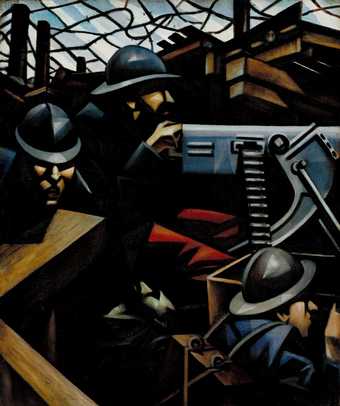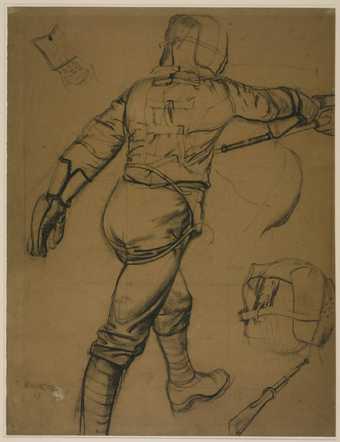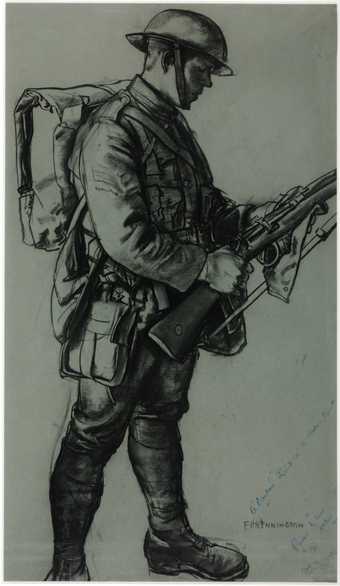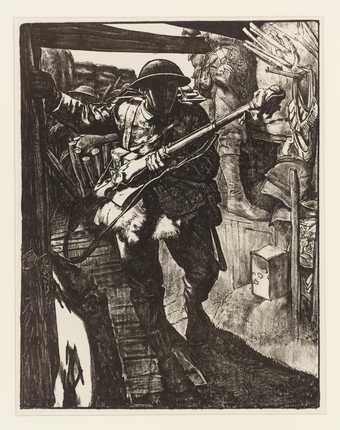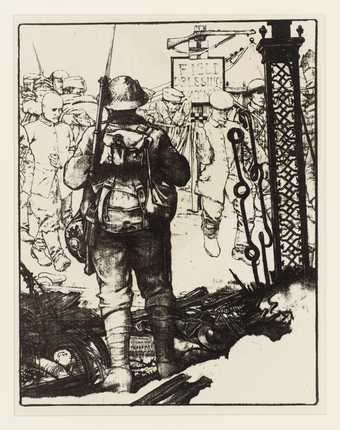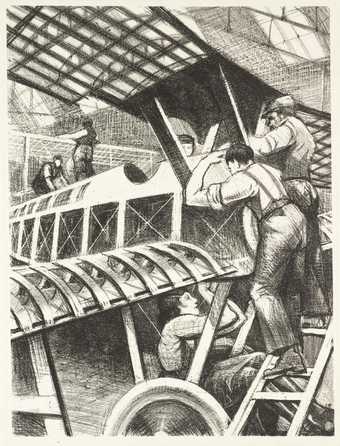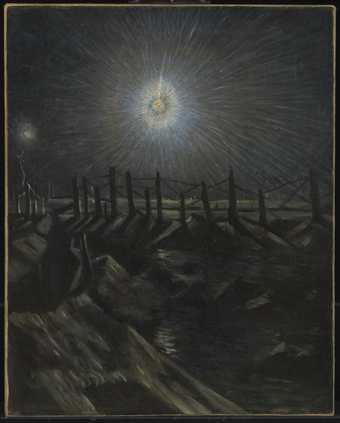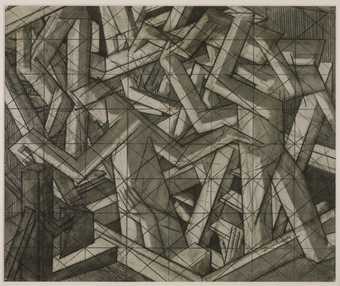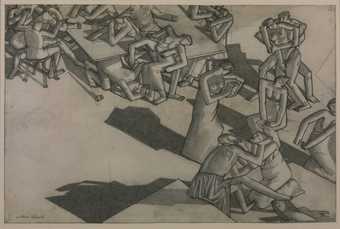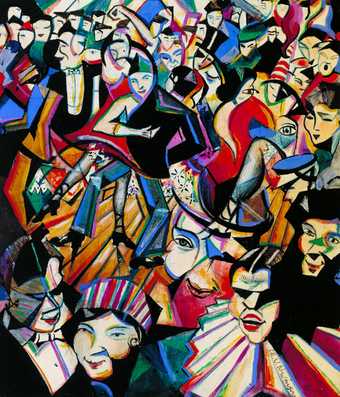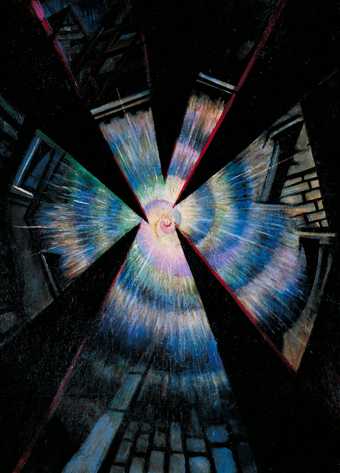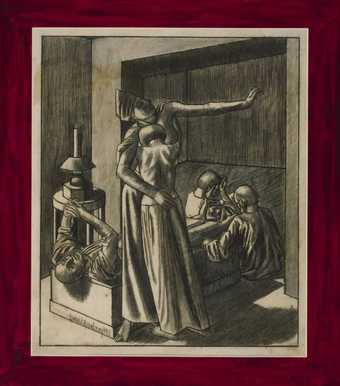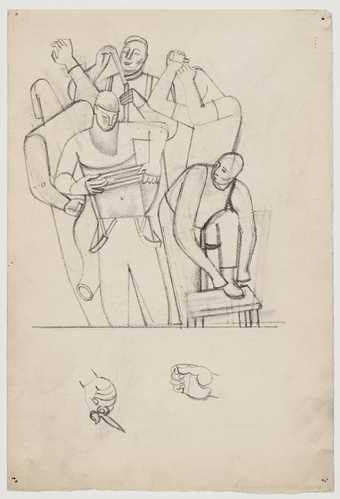
Not on display
- Artist
- Christopher Richard Wynne Nevinson 1889–1946
- Medium
- Charcoal and crayon on paper
- Dimensions
- Support: 146 × 206 mm
- Collection
- Tate
- Acquisition
- Purchased 1959
- Reference
- T00249
Display caption
Gallery label, December 2004
Does this text contain inaccurate information or language that you feel we should improve or change? We would like to hear from you.
Catalogue entry
T00249 STUDY FOR RETURNING TO THE TRENCHES 1914–15
Not inscribed.
Charcoal and crayon, 5 3/4×8 1/8 (14·5×20·5).
Purchased from the Leicester Galleries (Grant-in-Aid) 1959.
Coll: Mrs Kathleen Nevinson; the Leicester Galleries.
Exh: Leicester Galleries, September–October 1916 (35).
Lit: Mervyn Levy, ‘C.R.W. Nevinson, Undertones of Peace’ in Studio, CLXII, 1961, p.51, repr. p.50.
Drawn on the back of part of a larger sketch for the same painting, ‘Returning to the Trenches’, which was exhibited with the London Group, March 1915 (89) and is now in the National Gallery of Canada, Ottawa (repr. Konody, 1917, pl.59). The painting had already been reproduced in the Daily Express for 25 February 1915 with a report of an interview with Nevinson: ‘I have tried to express the emotion produced by the apparent ugliness and dullness of modern warfare. Our Futurist technique is the only possible medium to express the crudeness, violence, and brutality of the emotions seen and felt on the present battlefields of Europe.... Modern art needs not beauty, or restraint, but vitality.’
There is another drawing of this composition in the V. & A. (8×9 1/2 in.) and a woodcut was reproduced in Blast, 11, July 1915, p.89. A finished gouache (5 1/2×8 in.) is in the Imperial War Museum.
Published in:
Mary Chamot, Dennis Farr and Martin Butlin, The Modern British Paintings, Drawings and Sculpture, London 1964, II
Explore
- emotions, concepts and ideas(16,416)
-
- emotions and human qualities(5,345)
-
- anonymity(182)
- military: World War I(670)
-
- Western Front(140)
- weapons(925)
-
- gun, rifle(201)
- actions: postures and motions(9,111)
-
- marching(34)
- man(10,453)
- army(201)
- social comment(6,584)
-
- war(358)
You might like
-
Christopher Richard Wynne Nevinson La Mitrailleuse
1915 -
Eric Kennington Bayonet Practice
1917 -
Eric Kennington A Bantam Hercules
1917 -
Eric Kennington Making Soldiers: In the Trenches
c.1917 -
Eric Kennington Making Soldiers: Over the Top
c.1917 -
Eric Kennington Making Soldiers: Bringing In Prisoners
c.1917 -
Christopher Richard Wynne Nevinson Assembling Parts
1917 -
Christopher Richard Wynne Nevinson A Star Shell
exhibited 1916 -
David Bomberg Study for ‘In the Hold’
c.1914 -
William Roberts Drawing for ‘The Return of Ulysses’
1913 -
Christopher Richard Wynne Nevinson Dance Hall Scene
c.1913–14 -
Christopher Richard Wynne Nevinson Bursting Shell
1915 -
David Bomberg Family Bereavement
1913 -
William Roberts Study for ‘Christ Driving the Money Changers from the Temple’
c.1922–5 -
William Roberts Study for ‘Going to Swim’
c.1930–3

